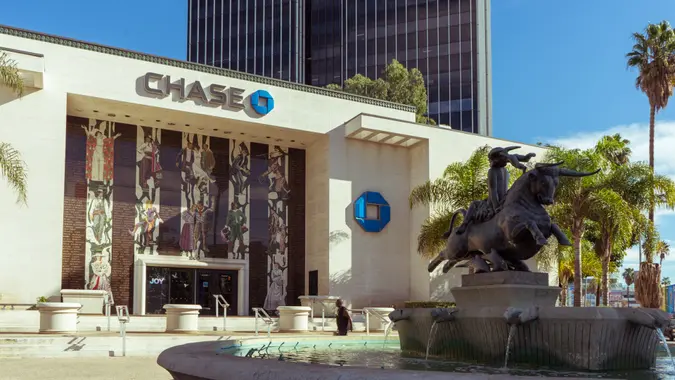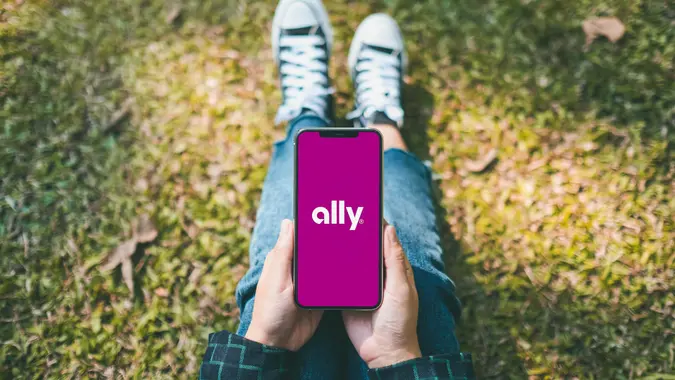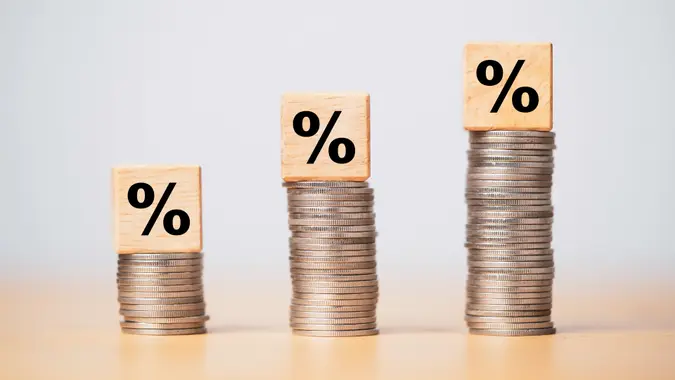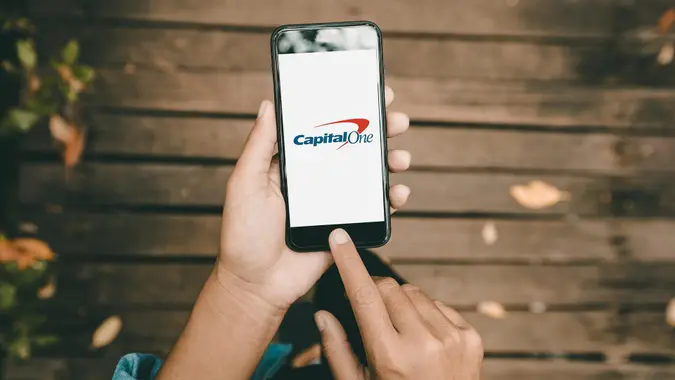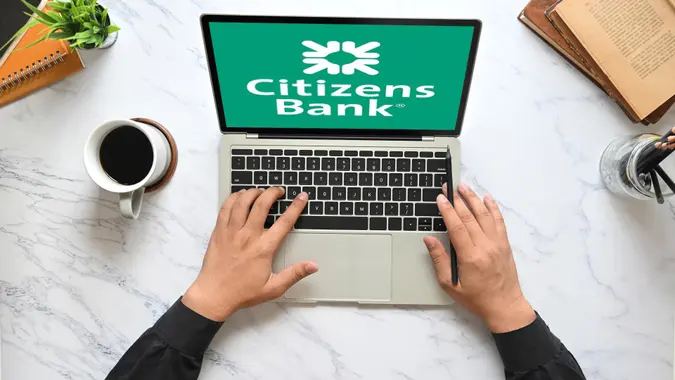High-Yield Savings Accounts vs. Money Market Accounts — Which Is Right for You?

Commitment to Our Readers
GOBankingRates' editorial team is committed to bringing you unbiased reviews and information. We use data-driven methodologies to evaluate financial products and services - our reviews and ratings are not influenced by advertisers. You can read more about our editorial guidelines and our products and services review methodology.

20 Years
Helping You Live Richer

Reviewed
by Experts

Trusted by
Millions of Readers
Emergency fund, college fund, retirement fund, new car fund, house down-payment fund, vacation fund…
That’s a lot of funds! But the truth is, we all have financial goals and dreams that require setting money aside. How you save that hard-earned cash depends on when you plan to use it–whether it’s for the short term or long term.
For long-term goals like retirement, you might consider a 401(k) or similar account. For college savings, a 529 plan is a common choice. But when it comes to shorter-term savings, you have a variety of options, starting with high-yield savings accounts and money market accounts. So, what’s the difference between these two? And which one is the best fit for your needs?
Key Differences Between High-Yield Savings and Money Market Accounts
When deciding where to place your hard-earned savings, understanding the key differences between high-yield savings accounts (HYSAs) and money market accounts (MMAs) can help you make the right choice for your financial goals. Below, we’ll explore how these accounts differ in terms of interest rates, accessibility, fees, and other factors.
Interest Rates and Growth Potential
One of the most critical aspects of any savings account is its annual percentage yield (APY). High-yield savings accounts typically offer higher APYs than money market accounts, making them an attractive option for those prioritizing growth. For example, some HYSAs provide rates well above the national average for traditional savings accounts. On the other hand, MMAs often have competitive rates but may require higher balances to access the best yields.
Accessibility and Account Features
Money market accounts offer more flexibility when it comes to accessing your funds. Many MMAs come with check-writing capabilities and debit cards, allowing for transactions that are more like those of a checking account. In contrast, high-yield savings accounts prioritize digital banking and often lack these features, making them ideal for savers who don’t need frequent access to their money.
Minimum Balances and Fees
HYSAs usually have low or no minimum balance requirements, making them accessible for savers at any stage. They also tend to have fewer fees, though it’s essential to check for potential charges like excessive withdrawal fees. Money market accounts, however, often require higher minimum balances to avoid monthly maintenance fees, which may deter some savers.
Risk and FDIC Insurance
Both HYSAs and MMAs are considered low-risk options, as they are FDIC-insured up to the maximum limit allowed by law. This ensures your money is protected even if the bank fails. Compared to other investments like stocks or mutual funds, these accounts offer unparalleled stability, though with lower growth potential.
Comparing Returns: High-Yield Savings and Money Market Accounts
Here are some interest rates that you can earn with a high-yield savings account:
| Bank or Financial Institution | APY |
|---|---|
| Jenius Bank | |
| Peak Bank | |
| Capital One | |
| Synchrony Bank | |
| Forbright Bank |
Here are some interest rates that you can earn with a money market account:
| Bank or Financial Institution | APY |
|---|---|
| Vio Bank | |
| FNBO Direct | |
| Discover Bank | |
| Ally Bank | |
| BankUnited |
Pros and Cons of Each Account Type
Which is better: a high-yield savings or money market account? The answer depends on how you want to access your cash.
If you want the convenience of writing checks or making withdrawals at an ATM, a money market account could suit you better than a high-yield account. If you need to get your money out of a high-yield savings account in short order, that is more difficult. Since many of the banks offering high-yield accounts are online, you could need to wait a few days for your money to transfer to a linked checking account instead of walking into a local branch.
High-Yield Savings Accounts: Pros and Cons
Are there downsides to high-yield savings accounts? The biggest is the slight wait you could have to access your money. But there is a big upside too: a typically low initial deposit — or even no minimum — to open a high-yield accounts. Some financial institutions require minimum deposits — and minimum balances — for money market accounts that can range from the hundreds to the thousands.
Money Market Accounts: Pros and Cons
If the convenience of writing checks and ATM access is more important to you, then a money market account might be more appealing to you than a high-yield savings account. Since some money market accounts could trigger fees, it’s wise to examine potential costs before opening an account.
How to Choose the Right Account
As long as your bank is a member of the Federal Deposit Insurance Corp., or your credit union is covered by the National Credit Union Association, your accounts are insured up to $250,000 per depositor and per account category. FDIC and NCUA insurance protects high-yield savings accounts, as well as money market accounts, in case of bank failure. But still, one account might be a better fit than the other.
Evaluating Your Savings Goals
The best account for you depends on your financial objectives. Consider factors such as liquidity, interest growth, and how often you’ll need to access your funds. If you’re saving for a long-term goal and don’t need frequent access, a high-yield savings account might be your best bet. For more flexible access, a money market account could be a better fit.
Example Scenarios
- HYSA: Ideal for a tech-savvy saver who prioritizes high returns and prefers managing their finances online.
- MMA: Perfect for someone who values the convenience of writing checks or using a debit card while still earning interest on their savings.
Final Take
Before opening either account, it’s wise to shop around to compare the basics that will impact how much you stand to earn and spend. Find out what the APY is over the course of the year, and whether you must have a certain amount in the account to earn the highest interest rate. Also learn whether the account has monthly maintenance costs, a limit on the number of checks you can write, ATM withdrawal fees or if you’ll pay if your account falls below a minimum balance.
Our in-house research team and on-site financial experts work together to create content that’s accurate, impartial, and up to date. We fact-check every single statistic, quote and fact using trusted primary resources to make sure the information we provide is correct. You can learn more about GOBankingRates’ processes and standards in our editorial policy.
 Written by
Written by  Edited by
Edited by 










